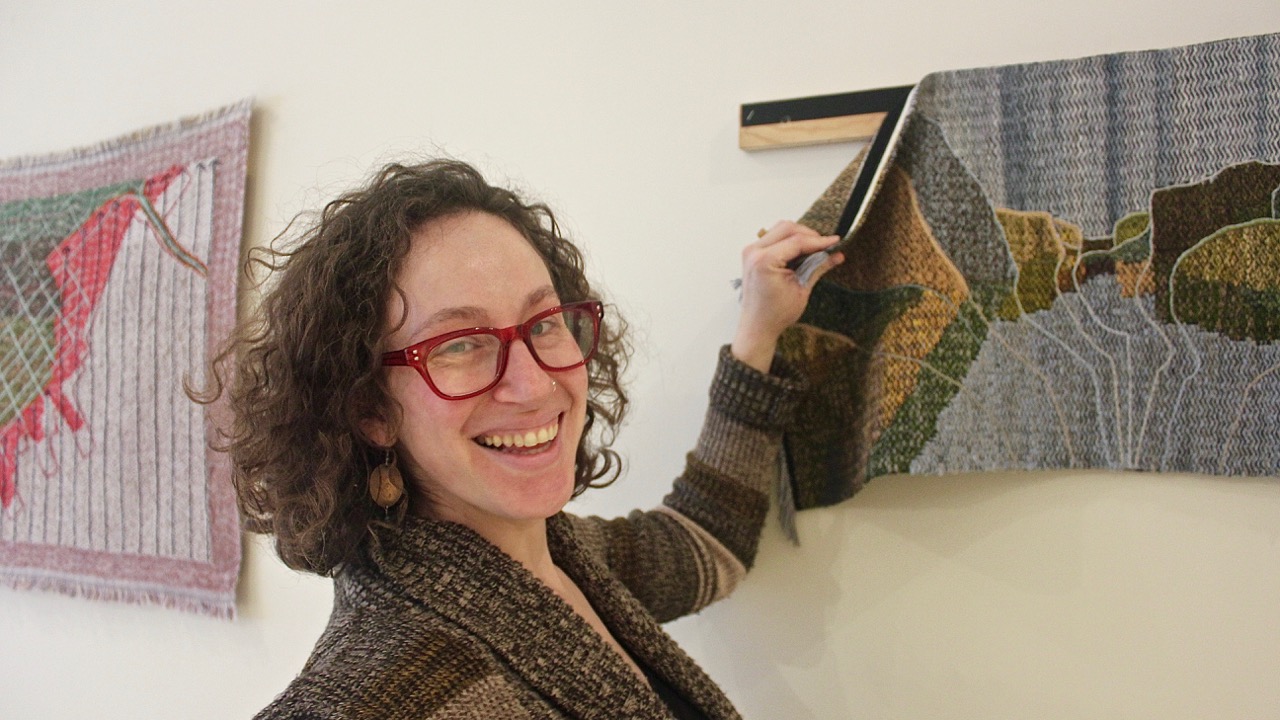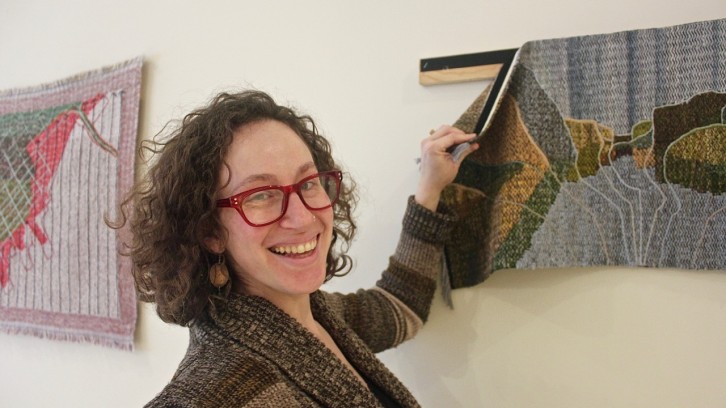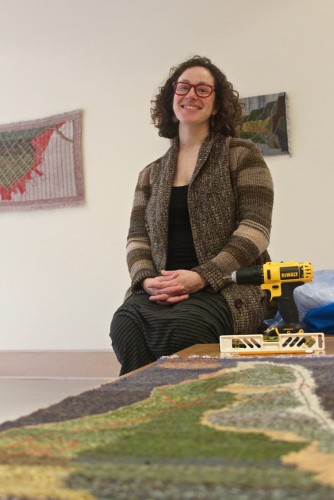Art
Rilla Marshall’s woven maps examine space between land and sea
NSCAD grad and textile artist Rilla Marshall addresses Atlantic Canada’s vulnerable shorelines in her new show at the Nova Scotia Centre for Craft and Design.

caption
Textile artist Rilla Marshall peels a handwoven map from its mount at the Mary E. Black Gallery downtown.
caption
Textile artist Rilla Marshall peels a handwoven map from its mount at the Mary E. Black Gallery downtown.Tucked inside the Nova Scotia Centre for Craft and Design, Rilla Marshall surveys the blank beige walls of the studio space.
Her handwoven maps rest neatly on the floor. Weighing the colour, symmetry and composition of each piece, she moves the textiles around like puzzle pieces, creating micro-compositions on every wall.
The Liminal Project, Marshall’s interpretation of Canada’s ever-changing coastline, opens in the Mary E. Black Gallery downtown tonight at 6 p.m. The show’s handwoven wall-hangings and 3D crochet pieces depict the transitional space between land and sea.
“All my pieces focus on that liminal space, imagining and reimagining the shorelines of where we live and how that has to do with memory and our sense of culture,” says Marshall.
Marshall was born in St. John’s, N.L. and lived in Halifax for 11 years after completing her Bachelor of Fine Art in textiles at NSCAD in 2004. She now lives in P.E.I. running her business out of her home, Marshall Arts.
The process: “A loom looks like a piano, but instead of making music you’re weaving cloth.”
Marshall started The Liminal Project in 2010. After compiling historic maps, aerial images, geographical data and studies from a friend who works as an adaptation specialist in climate change, Marshall created a composite map for each of her pieces with Google Earth.
“Then it’s just eyes up, eyes down,” says Marshall.
She freehands each piece on an eight-harness, 60-inch Cranbrook Countermarche loom, considered the “cadillac of looms.” Working five hours a day, she presses pedals in a specific sequence to create inlays that take about a week to complete: zig-zag patterns for water, diamond patterns for sand and larger diamond patterns for land.
Making a scanning motion with her hand, she explains she works line by line “kind of like a printer.” Accuracy isn’t necessarily Marshall’s goal—she’s more interested in the translation process.
“I like that idea of taking high-tech information, or information that’s been produced by high-tech sources like Google Earth or satellite imaging, and then subverting it in a way by weaving it by hand and slowing it down,” says Marshall.
Textiles “have all sorts of connotations. They’re soft, they’re warm, they’re fuzzy. They’re usually associated with the domestic…Being able to translate (this data) or portray it or interpret it through textiles hopefully makes people more engaged with it. That’s always been my approach.”
Marshall builds images into her weaving by blocking out areas of colour. Once a piece is off the loom, she uses embroidery to emphasize certain areas of the image.
“Weaving itself is a grid. It’s a binary code. Either your string is up or your string is down. It’s a grid that allows you to build these images. There’s a lot of math involved in weaving. It’s very processed, methodical work.”
[idealimageslider id=”7421″]
Other Projects
Marshall has always lived with an awareness of the fragility and vulnerability of P.E.I.’s coastlines because of erosion, storm-surges and higher sea levels. She says it has to do with growing up in P.E.I.—and the fact that everyone in her immediate family has a biology degree.
“I’ve always been really interested in the mix between art and science. I don’t feel like they’re two separate things. I feel like art can be a real catalyst to engaging people, talking about issues that are relevant to our lives.”

caption
Rilla Marshall: “All my pieces focus on that liminal space, imagining and reimagining the shorelines of where we live and how that has to do with memory and our sense of culture.”Every summer, Marshall works on eastern P.E.I.’s Greenwich Peninsula for Parks Canada. The other eight months of the year, she’s creating show pieces or weaving “functional textiles,” like scarves and tea towels, for craft fairs.
She tries to source her wool as much as possible from locally-raised sheep and alpacas.
“Everything to do with textiles and fibre art is really agricultural. That’s just the nature of it,” says Marshall. “What we put on our bodies—unless it’s totally synthetic—comes from either an animal or a plant that somebody had to raise and process in a certain way so that we could get yarn.” This resonates, of course, with the environmental thread of her work.
It all weaves together.
“So many puns to be made—the fabric of our lives!” she laughs. “There are so many textile metaphors you can use. It’s out of control.”
The sounds of weaving
Rilla spoke with reporter Sophie Allen-Baron about weaving the maps.

